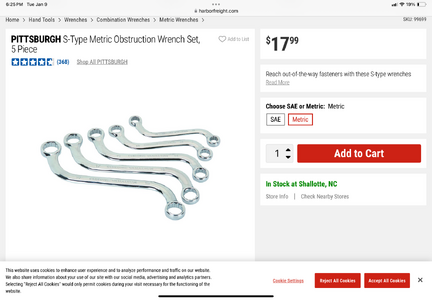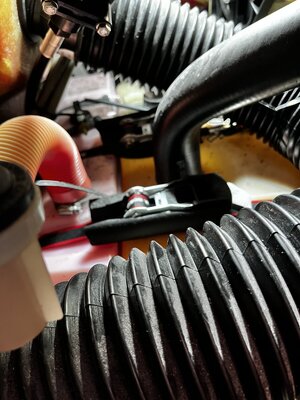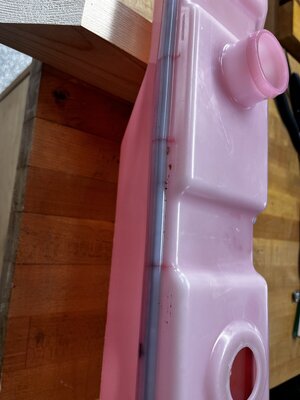I'm looking for help and/or guidance...
I have two 2001 GTX carbureted 951 relatively low-hour fresh-water machines, and both have oil tanks leaking at the parting line seams. I've been able to use them by not filling the tanks above the seams. This reduces the amount of leakage significantly, but not completely, so it's still a hassle. I cannot find repair facilities willing to work on machines this old. There are on-line forum threads and videos covering oil tank replacement, but I haven't found any that are done with the 951 engine still installed.
I'm a pretty handy and technical guy with plenty of tools, but have only limited experience working on these Jet Skis. The engine is really packed into these machines, and accessing the rear oil tube at the lower rear of the tank appears to be impossible without first removing at least the Exhaust Head Pipe (see attached photo). In removing the Exhaust Head Pipe, access to the lower nut that secures the Head Pipe to the Exhaust Manifold looks to be very difficult without first removing the carburetors. So... I'm beginning to question how deep I want to get into this job.
My questions are:
1. If I get special tool (529-035-505) for accessing the removing the lower flange nut mentioned above, can I remove the Head Pipe without having to remove the carburetors? And if so, is there even access to get the nut hand-started for reinstallation?
2. Once the Exhaust Head Pipe is disconnected, is there enough clearance to actually remove it from the engine compartment? (There doesn't appear to be - see attached photo)
3. Is this job even worth doing, or am I better off to keep using them the same way I've been (by keeping the oil levels below the tank seams, and cleaning the minimal seepage from the hulls occasionally?
Any advice is greatly appreciated!
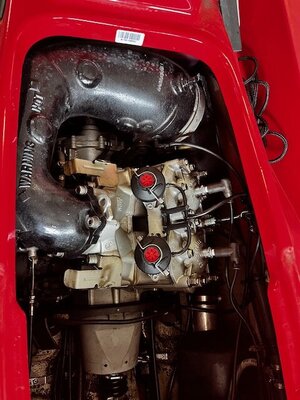
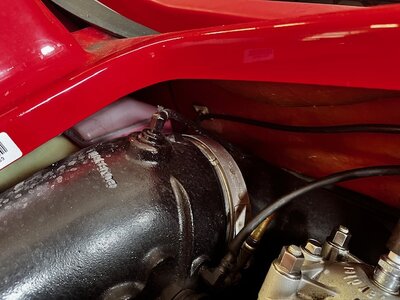
I have two 2001 GTX carbureted 951 relatively low-hour fresh-water machines, and both have oil tanks leaking at the parting line seams. I've been able to use them by not filling the tanks above the seams. This reduces the amount of leakage significantly, but not completely, so it's still a hassle. I cannot find repair facilities willing to work on machines this old. There are on-line forum threads and videos covering oil tank replacement, but I haven't found any that are done with the 951 engine still installed.
I'm a pretty handy and technical guy with plenty of tools, but have only limited experience working on these Jet Skis. The engine is really packed into these machines, and accessing the rear oil tube at the lower rear of the tank appears to be impossible without first removing at least the Exhaust Head Pipe (see attached photo). In removing the Exhaust Head Pipe, access to the lower nut that secures the Head Pipe to the Exhaust Manifold looks to be very difficult without first removing the carburetors. So... I'm beginning to question how deep I want to get into this job.
My questions are:
1. If I get special tool (529-035-505) for accessing the removing the lower flange nut mentioned above, can I remove the Head Pipe without having to remove the carburetors? And if so, is there even access to get the nut hand-started for reinstallation?
2. Once the Exhaust Head Pipe is disconnected, is there enough clearance to actually remove it from the engine compartment? (There doesn't appear to be - see attached photo)
3. Is this job even worth doing, or am I better off to keep using them the same way I've been (by keeping the oil levels below the tank seams, and cleaning the minimal seepage from the hulls occasionally?
Any advice is greatly appreciated!






